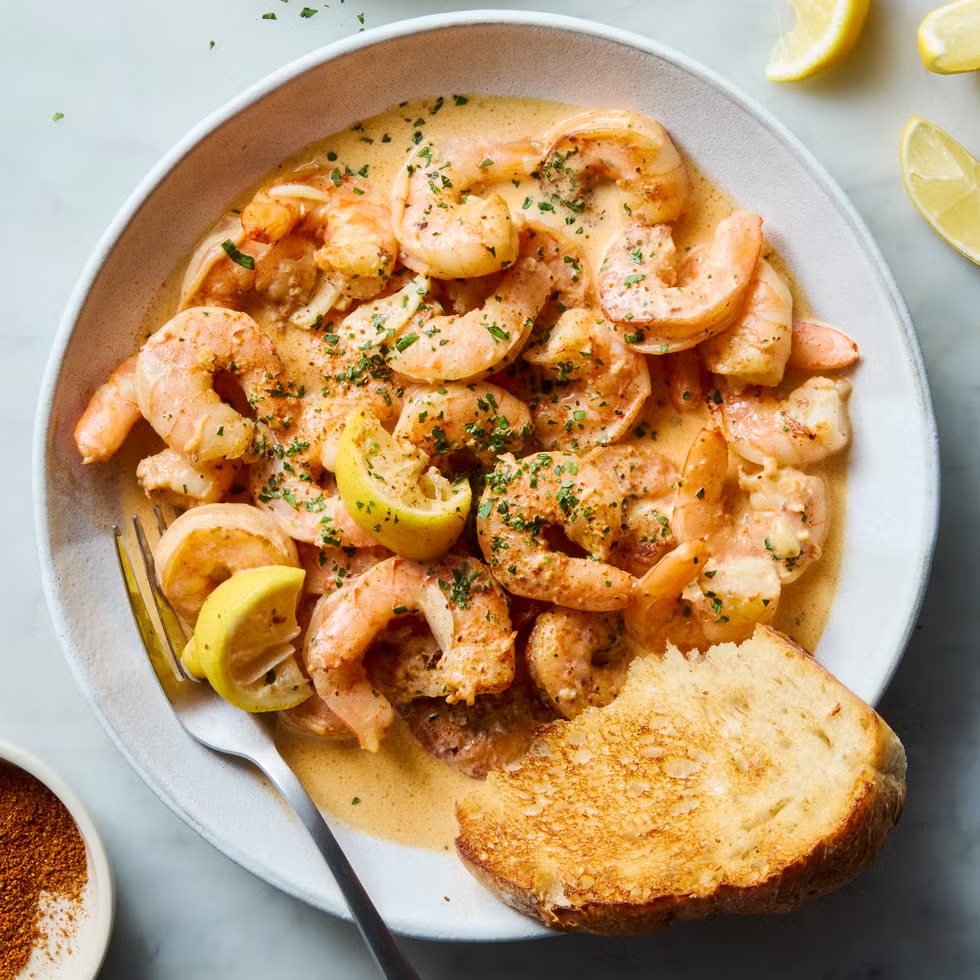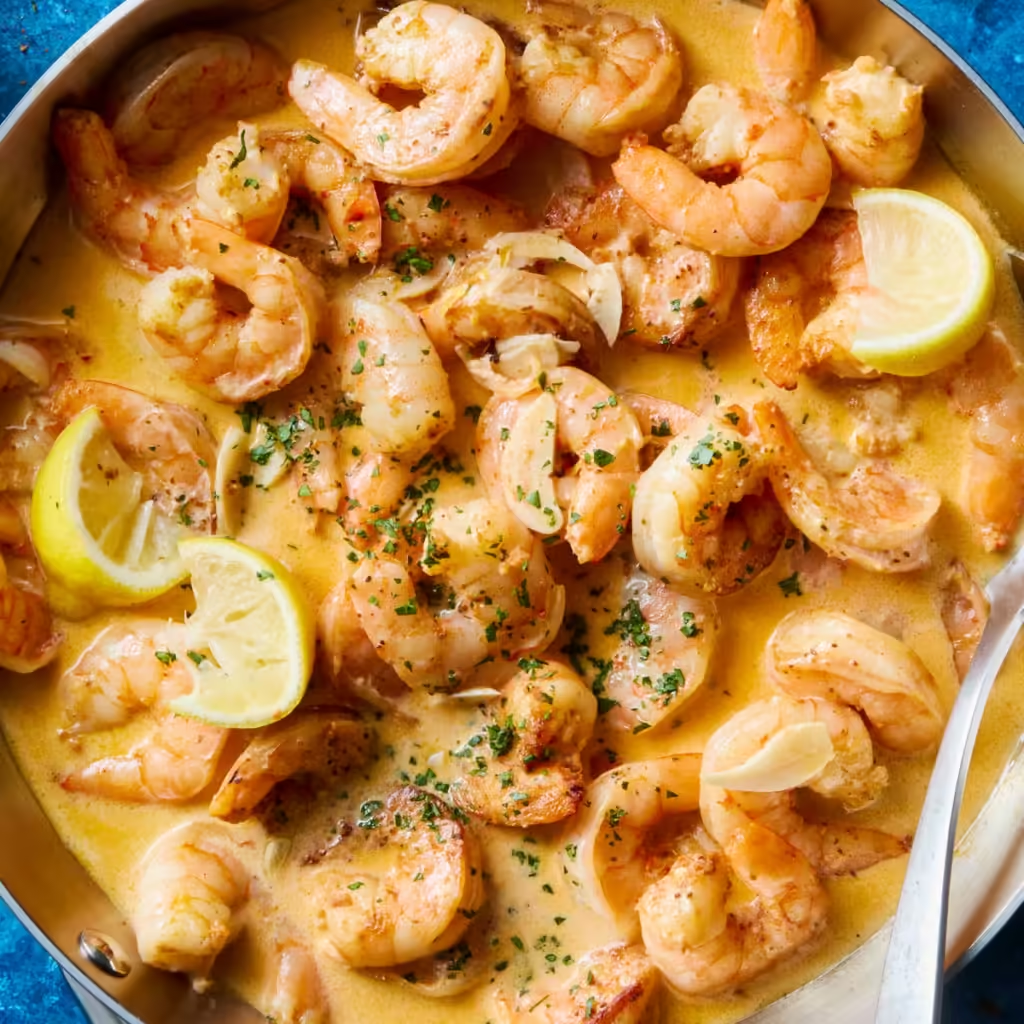This is one of those recipes you’ll turn to when you want a restaurant-worthy meal without leaving your kitchen. Creamy Lemon Garlic Shrimp combines the bold flavors of garlic, the tang of fresh lemon, and the richness of cream for a dish that’s as comforting as it is flavorful. If you’re already a fan of classic lemon garlic shrimp, this creamy twist will quickly earn a permanent spot in your dinner rotation. Tender, succulent shrimp are seasoned with a touch of Old Bay and lemon zest, then sautéed in butter until golden and fragrant. A creamy garlic-infused white wine sauce ties everything together in a single skillet, making this recipe both easy and irresistible. Serve it over pasta, alongside roasted vegetables, with a loaf of crusty bread, or over mashed potatoes for a truly satisfying meal.
Pro Tip:
While Old Bay seasoning is a classic for shrimp, feel free to experiment with Cajun, Creole, or your own favorite spice blend to make this dish uniquely yours. The balance of the creamy sauce and spices works well with a variety of seasonings, so don’t be afraid to get creative.
Storage
To store leftovers, place the shrimp and sauce in an airtight container and refrigerate for up to 3 days. When reheating, gently warm in a skillet over low heat, adding a splash of chicken broth or water to loosen the sauce. Take care not to overcook, as shrimp can turn rubbery fast. Freezing isn’t recommended, as the cream sauce can separate and the shrimp’s texture may change upon thawing.
Did you give this recipe a try? Share your feedback and tips in the comments below—we’d love to hear how it turned out!
Directions
Step 1
In a large bowl, combine shrimp, Old Bay seasoning, lemon zest, and 1/4 teaspoon salt. Heat a large stainless steel skillet over medium heat and melt the butter. Place the shrimp in the skillet in an even layer. Cook without stirring for 2 minutes. Flip the shrimp and continue cooking for 1 to 2 more minutes, until they are opaque and fully cooked. Move the shrimp to a plate and set them aside.
Step 2
Add the minced garlic to the same skillet and sauté, stirring, until it becomes fragrant and starts to soften, about 1 to 2 minutes. Pour in the white wine, bring to a simmer, and cook, stirring occasionally, until the wine reduces by about three-quarters, approximately 3 to 4 minutes. Add the heavy cream and chicken broth, bringing the mixture back to a gentle simmer. Cook, stirring occasionally, until the sauce thickens slightly and reduces by about half, around 8 minutes.
Step 3
Return the cooked shrimp to the skillet and stir in the juice of half a lemon. Sprinkle freshly chopped parsley on top for garnish. Slice the remaining half of the lemon into wedges and serve them alongside the shrimp for an extra burst of citrus flavor.

Ingredients
- 1 lb (450g) large shrimp, peeled and deveined
- 1 tsp Old Bay seasoning
- Zest of 1 lemon
- 1/4 tsp salt
- 2 tbsp unsalted butter
- 3 garlic cloves, minced
- 1/2 cup (120ml) white wine (or chicken broth as a substitute)
- 1/2 cup (120ml) heavy cream
- 1/4 cup (60ml) chicken broth
- Juice of 1/2 lemon
- Fresh parsley, chopped, for garnish
- Lemon wedges, for serving
FAQ
How long can you keep shrimp in lemon?
Shrimp should not be kept in lemon juice for more than 30 minutes, as the acid in the lemon can start “cooking” the shrimp, altering its texture. If you’re marinating shrimp in lemon juice, a short duration is ideal to avoid it becoming overly tough or mushy.
What do you eat garlic shrimp with?
Garlic shrimp pairs well with a variety of sides, such as steamed rice, creamy pasta, roasted vegetables, or a fresh salad. Crusty bread is also a great option to soak up the flavorful sauce.
Why does lemon juice cook shrimp?
Lemon juice contains citric acid, which denatures the proteins in shrimp in a process similar to cooking with heat. This changes the texture and appearance of the shrimp, giving it a “cooked” look even without heat.
How many calories do lemon garlic shrimp have?
Lemon garlic shrimp typically contains about 200-250 calories per serving, depending on the specific ingredients and portion size. Adjustments like adding cream or butter will increase the calorie count.
